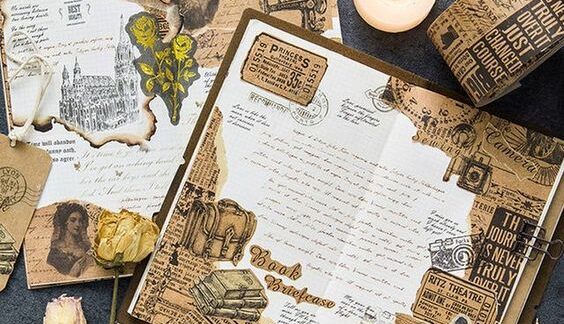Art is not always about paint, clay, or canvas. Sometimes, it is about words — quiet, personal, and deeply human. Diary and journal writing stand as timeless forms of expression, where the simple act of recording thoughts transforms into an intimate art form. More than just daily notes, journals become mirrors of the mind, containers of memory, and creative spaces where life turns into literature.
What Makes Journal Writing an Art?
At its core, journal writing is a form of self-expression. Yet, when approached with intention, it becomes an art form in itself. Unlike novels or essays written for an audience, diaries often begin as private reflections. However, their honesty, creativity, and raw emotion make them powerful works of art.
Think of journal writing as a combination of:
- Storytelling → weaving events into personal narratives
- Visual art → doodles, sketches, or decorated pages
- Poetry → capturing fleeting emotions with rhythm and brevity
- Memory preservation → holding onto experiences that might otherwise fade
Through this blend, journals rise beyond simple documentation and become living works of art.
A History of Diaries as Art
Throughout history, people have used diaries not only as personal records but as artistic works:
- Leonardo da Vinci’s notebooks — filled with sketches, scientific ideas, and philosophical musings, his journals are now regarded as masterpieces of art and science.
- Frida Kahlo’s diary — her personal journal mixed paintings, poems, and confessions, offering insight into her creativity and suffering.
- Virginia Woolf’s journals — her reflections shaped her novels and influenced modern literature.
These examples prove that diaries are not just private companions — they can hold cultural, artistic, and historical significance.
The Artistic Forms of Journal Writing
Diary and journal writing express themselves in many ways:
1. The Written Word
- Narrative storytelling of daily life
- Freewriting to explore thoughts
- Poetic reflections in fragmented lines
2. Visual Elements
- Illustrated journals with sketches and watercolors
- Collages of tickets, photos, or pressed flowers
- Hand lettering and calligraphy for emphasis
3. Hybrid Forms
- Travel journals that combine maps, notes, and drawings
- Dream diaries blending surreal stories with imagery
- Gratitude journals decorated with colors and symbols
This versatility makes journal writing not just a literary act but a multidisciplinary art form.
Journaling as Creative Therapy
Beyond aesthetics, journal writing has therapeutic value. It helps people process emotions, reflect on challenges, and foster creativity. Many artists use journaling as a daily ritual to:
- Overcome creative blocks
- Explore subconscious thoughts
- Record inspirations before they vanish
Psychologists even recommend expressive writing as a way to heal trauma, reduce stress, and increase self-awareness. In this sense, journal writing is not only art — it is medicine for the soul.
Modern Journal Art Practices
In today’s world, journaling has taken new creative directions:
- Bullet Journals → Combining organization with artistic layouts, colors, and hand lettering.
- Art Journals → Mixing painting, collage, and writing on each page.
- Digital Journals → Using tablets or apps to create multimedia diary entries.
- Social Journals → Platforms like Instagram and Tumblr showcase diary-style posts as public art.
These evolving practices prove that diary writing remains as relevant and creative as ever.
Why Diary Writing is Art
Diary and journal writing qualify as art because they transform the ordinary into the extraordinary. A simple sentence like “Today it rained, and I felt at peace” may seem plain, yet in a journal it becomes a brushstroke in the larger painting of one’s life.
It is art because it:
- Requires imagination and creativity
- Transforms personal moments into universal themes
- Preserves beauty in small, fleeting experiences
How to Start Journaling as an Artistic Practice
- Choose your medium – Notebook, sketchbook, or digital app.
- Set a ritual – Write daily or weekly, even if only a few lines.
- Mix words with visuals – Add doodles, colors, or clippings.
- Experiment with styles – Try poems, lists, letters, or collages.
- Embrace imperfection – The beauty of art journaling lies in raw authenticity.
Remember: Your journal is a safe space — you are both the artist and the audience.
Final Thoughts
Diary and journal writing are more than habits; they are artistic journeys into the self. They capture not just what we do, but how we feel, dream, and imagine. From the private notebooks of great artists to the decorated journals of today, this practice proves that art can live quietly in the pages of a diary.
“In every word written for oneself, there is a hidden poem waiting to be discovered.”
So pick up a pen, open a blank page, and let your journal become your canvas.

Leave a Reply